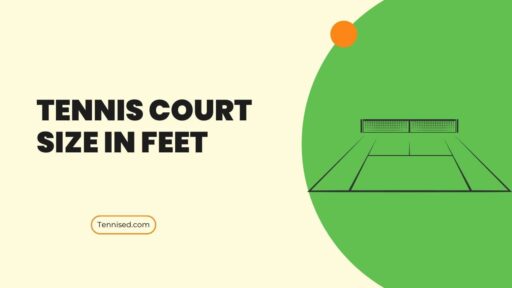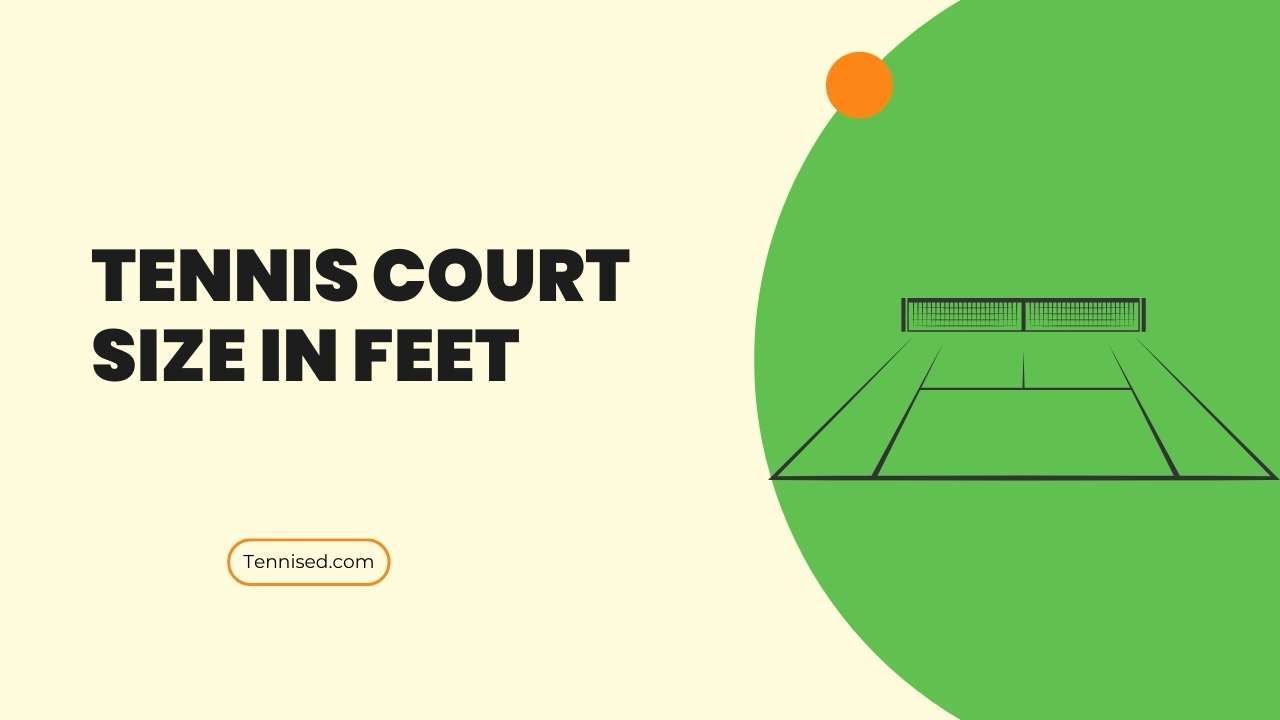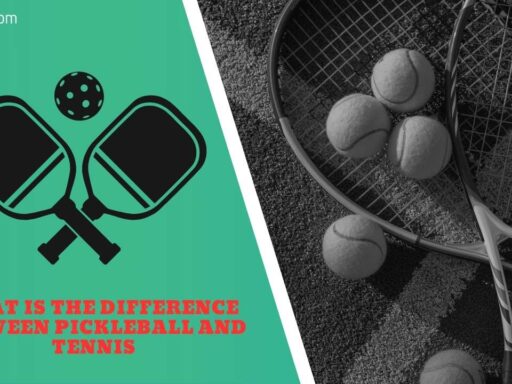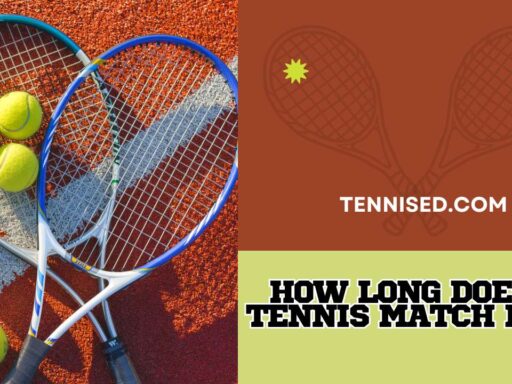The size of the court determines whether playing tennis is a fair and enjoyable experience. The size of a tennis court can affect how people play, how they make strategies, and even how much fun they have in the field. This guide gives an in-depth analysis of the right dimensions for a tennis court in feet.
Standard tennis court size in feet
Before we go into detail, let us understand what constitutes standard tennis court sizes in feet. According to International Tennis Federation (ITF) standards of a normal tennis court, while singles matches measure 78ft by 27ft across their width, lengthwise, they are only 78ft long; doubles matches, on the other hand, maintain the same width but increase by length alone to forty-eight (48). These dimensions create an equal playing ground where no player has the upper hand or disadvantage due to court measurements.
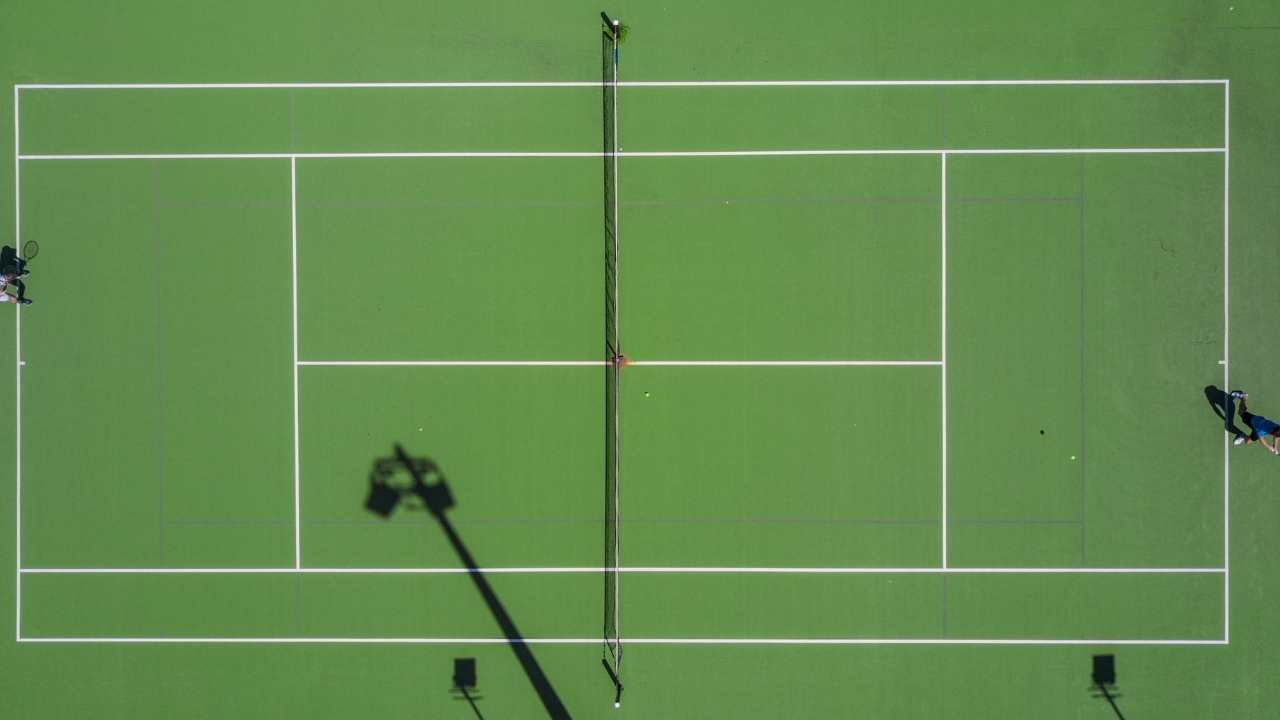
Credit: www.pexels.com
The Fundamentals of Tennis Court Dimensions
To most people, a green space with a net going down its middle could look like nothing more than just that: a big lawn. However, this is far from true, as these courts are well-thought-out rectangles that are different from one another based on their measurements,
The dimensions you need to know
Length & Width
A normal tennis court measures 78 feet long. However, widths may differ depending on whether single or double matches are played. Thus, while singles games occupy only 27 feet wide spaces and their length of seventy-eight (78), doubles competitions use wider squares spanning thirty-six (36). Player movements and tactics during play depend heavily on this width difference between the two games.
Net Height & Post Placement
The net is located exactly halfway between two ends, standing three feet high at the center and three and a half inches at the posts; it acts as an unchangeable dividing line, splitting the arena into two parts. In addition, net posts have been placed beside the doubles court at a three-foot distance on either side to enforce this rule.
Service Boxes
On each side of the net in tennis courts are two service boxes from which players must perform their serves. For singles matches, they measure 21ft by 13.5ft; for doubles, this increases to eighteen (18) feet wide. If used wisely, the service box is always an added advantage to the player because any change in point serving begins from there.
Importance of having the correct tennis court size
It is important to have the right tennis court size for several reasons. Firstly, it ensures that nobody gets an unfair advantage or disadvantage because of how big or small a court is during playtime. A correctly sized court allows players to move freely and make shots without feeling trapped or restricted.
Secondly, the correct size contributes greatly to enjoyment and safety concerns. Smaller courts may lead to accidents due to collisions, while bigger ones make movements slower and less interesting. By considering the most favorable dimensions for a tennis field, one can concentrate more on one’s performance rather than worrying about its measurements and completely involve oneself in such a game.
Finally, the correct court size must be maintained to sustain the sport’s integrity. Tennis has been played for centuries, and standard dimensions have been established to ensure uniformity and comparability between different courts and tournaments. Players who follow the recommended court size can play the game knowing that it is played fairly.
Considerations When Determining Ideal Tennis Court Size
Several factors need to be taken into account when deciding on the ideal tennis court size for a given location. One is space availability: there should be enough room for the entire court, including buffer zones and extras such as spectator seats.
Another crucial factor is the level of play. Professional tennis courts are typically bigger than recreational or backyard ones, so professional players can employ pro-level skills and strategies. Therefore, while determining the best size, think about what their skill levels would indicate.
Moreover, location weather conditions may affect court sizes, too. The availability of extra space will probably necessitate a larger playing area for areas with high winds because the wind will interfere with how a ball flies; hence, it needs much more space, while thin turfs require less square footage, especially due to the sun heating it.
Different Tennis Court Sizes
Individual tennis courts do not all have similar measurements because different types of tennis and environmental factors do not warrant one single-size-fits-all approach.
Clay Courts
Clay courts usually have slightly greater dimensions compared to hard or grass ones. These courts result in slower-paced games offering longer rallies, thus requiring players to have greater stamina.
Grass Courts
Hardcourts might have the same dimensions as grass, but slight differences occur depending on the ground material. Grass is quick-playing by nature and encourages a serve-and-volley play style.
Indoor Courts
Indoor hardcourts are almost identical in size to outdoor hardcourts, albeit with minor changes due to their specific purposes. To some extent, these courts are desirable for a more controlled and tactical style of play.
Local Rules and Regulations
In addition to the universal rules enacted by international tennis bodies, there might be some local ones concerning court sizes. In such cases, cities or individual clubs may have specific requirements based on the available space and the level of play.
Club-Specific Variations
Some luxury professional clubs could have altered court sizes for aesthetic purposes or members’ preferences. These deviations are less about the game itself but rather about identity and culture within the club.
Residential Tennis Courts
However, suppose you have an outdoor tennis court at home or, say, a community tennis court built in your neighborhood. In that case, its dimensions may just be chosen for space practicalitys, allowing it to become a more family-friendly recreational spot.
How do I measure my tennis court in feet?
You will require a measuring tape or wheel to accurately measure tennis court size in feet. First, identify the outer edges of the court, such as the boundaries and buffer zones. Then, measure the length of the court from one baseline to another, recording this measurement in feet. Similarly, measure the width of the court from one sideline to another and record it also in feet. These measures will help you answer questions like: What is the area of a tennis court in square meters?
Misunderstandings about tennis Court Sizes
Various misconceptions surround tennis court sizes that should be cleared up. One such misconception is that bigger courts are always better. However, larger courts can make gameplay slower and less dynamic despite offering greater playing areas than smaller ones. The standard court size strikes a balance to allow for an exciting game.
Another mistaken belief is that small or reduced dimensions courts are best suited for beginners or casual tennis players. For novices, though, smaller courts are easier to cover, but players of all levels must practice and play on a full-sized court to enhance their skills and get used to different types of games.
Advantages associated with sticking to the right Tennis Court Size
Consequently, adhering strictly to these regulations ensures fairness among players irrespective of their level of competence and discovery of what they need most to do well during this sporting event (Witschi 32). Additionally, playing on a correctly built pitch enables players to show their real skill, providing good competition.
On another angle regarding the judicious observance of the right dimensions by which tennis courts are made, spectators’ experience becomes more focused on watching games since they have already been played because these people have had them several times (Witschi 33). Therefore, as broadcasters or television viewers, we cannot afford to watch chess rather than any form of active sport; thus, standardized dimensions meant broadcasters and television programs were well.
Lastly, following the right court size would go a long way in supporting the growth of tennis as a sport. This would allow the game’s evolution as it is played on different courts and tournaments. It ensures that players are at their best and upholds the integrity of the game.
Maintenance and Safety Considerations for Tennis Courts
Keeping and making tennis courts safe is essential for their longevity and enjoyment by users. Regular maintenance like refinishing and cleaning is required to keep it in good condition. Repairing all cracks or uneven surfaces immediately will help to prevent any injury mishap during playing time.
Safety, lighting, and fencing are other important issues to consider. Night play is possible only with adequate lighting systems, ensuring players’ security. The fence around this area protects against balls hitting out of bounds onto other courts or causing accidents.
Frequently Asked Questions
The following section answers frequently asked questions about tennis court sizes:
Is there any universal standard when it comes to tennis court sizes?
The International Tennis Federation (ITF) has set a standard that specifies the dimensions of each aspect of the court. Nonetheless, there is elasticity in those standards to accommodate different types of games.
Is it possible to change the tennis court size?
Indeed, you could technically change the width of a tennis court to create a different playing experience. Nevertheless, altering the length would mean you no longer have an international-sized tennis court.
Do game rules depend on court sizes?
Sometimes, yes, and sometimes no. On the one hand, it is just about dimensions; on the other hand, they determine how enforcement is implemented. For example, an out judgment will occur more frequently in a smaller court.
Conclusion
To sum up, finding out what an ideal tennis court size in feet is so important in this sport as it affects fairness in the game and fun and safety while playing. Thus, if players want to be sure that they are following all regulations and can fully participate in such activity, then they must follow International Tennis Federation suggestions regarding its width and other physical characteristics like length or height measurements, which are determined by individual preferences.
Therefore, things like how much space you have available for your new court, how good you are at playing this game and whether you can stand extreme heat should guide you when deciding upon what would be regarded as the best dimensions for your future ground/property many advantages come with using correct tennis courts sizes such as fair play during matches, satisfaction among fans watching these events live on tv sets, etc.
The growth rate among them With proper tennis courts’ maintenance towards prevention of accidents happening while people engage themselves into it over the years ahead.
CTA: Whether you’re a professional athlete or an amateur enthusiast who wants to enjoy playing this kind of sport again after years away from any ball – finding appropriate stops feeling satisfied with your skill level but still experiencing something new and different than before, keep in mind this handbook suggestions as well ask professionals who could guide accordingly until find what suits best possible. Get ready to upgrade your game to new heights!

